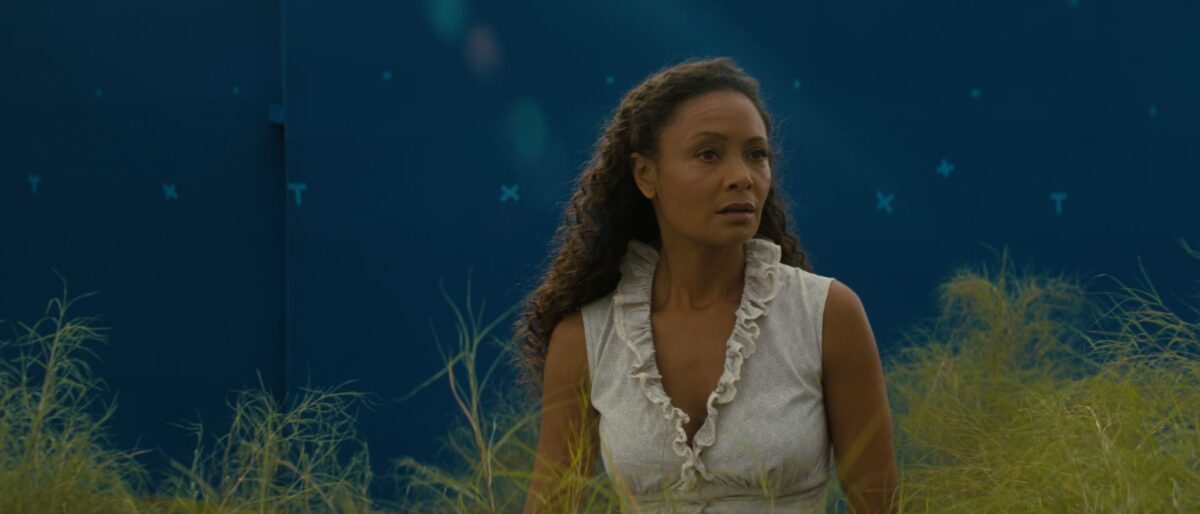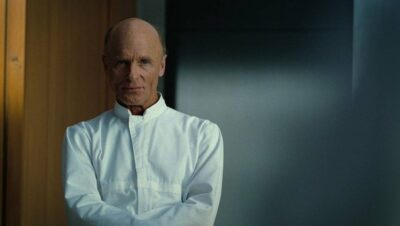HBO’s Westworld season three takes place three months after the Westworld massacre of the second season, with Dolores having escaped Westworld along with a set of host processing cores or ‘pearls’.
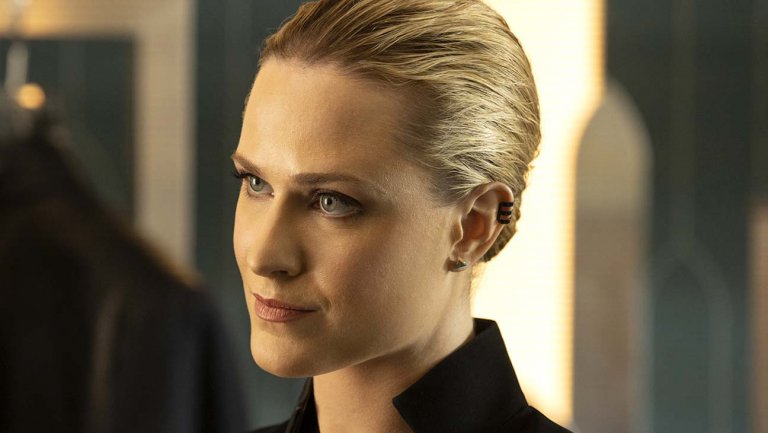
The television series was created by Jonathan Nolan and Lisa Joy, and it is based on the 1973 film of the same name by Michael Crichton. The third season of Westworld consisted of eight episodes. The cast for this season was led by Evan Rachel Wood (Dolores Abernathy), Thandie Newton (Maeve Millay), Jeffrey Wright (Bernard Lowe), Tessa Thompson (Charlotte Hale), Ed Harris (William/Man in the Black Hat) and newcomer Aaron Paul (Caleb Nichols). While there are some scenes in the original Westworld park, and the new Warworld location, much of this season took place in the ‘real’ world, in some not too distant future.
CoSA VFX was one of the primary visual effects companies on Westworld. It was also one of the teams that had to finish the show whilst rapidly moving into being a distributed and locked-down company, with all their employees self-isolated. Episodes 1 to 5 were completed prior to the shutdown, the last three episodes had to be finished over a distributed home network. Even with the shutdown, the artists in CoSA did an incredible job, the original delivery dates were unchanged, and all the final on-air schedules were met.
CoSA solved the issue of workstations and render farms by virtualizing the artist machines, “really quickly – thanks to our brilliant IT team who worked with Teradici, and we got everyone moved over and up and running in about three days after the lockdown”, explained Tom Mahoney, VFX Supervisor, and Partner of CoSA VFX. Of the normal 140 CoSA staff, some 40 to 50 were directly working on Westworld when the lockdown happened. To manage the project remotely, the VFX producers relied heavily on ftrack scheduling and various private Slack channels the team set up. The final rendering was still done back at the CoSA office, which had just two IT people maintaining the facility and monitoring the company’s render farm.
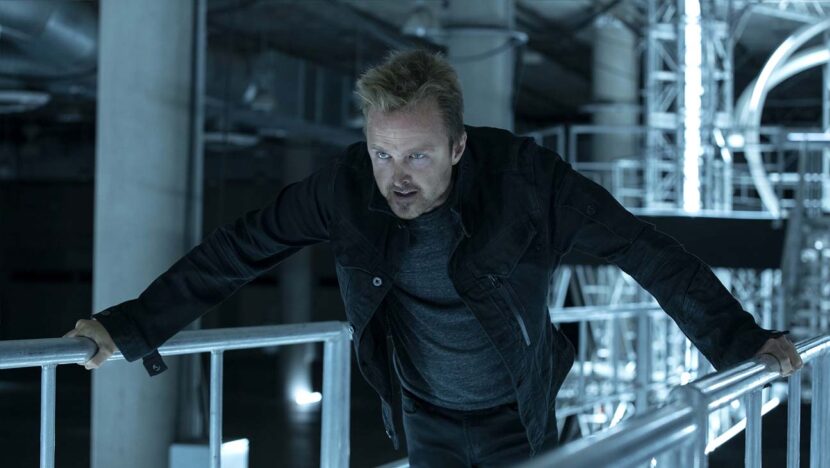
Sebastiano D’Aprile was CoSA’s VFX Supervisor for the show, “the cool thing about season three is that now that they are outside the park, the scope of work got much bigger. The visual effects are way more diverse, and what we like is doing a range of so many different types of effects shots.” CoSA did both invisible effects as well as some very strong, full CG shots such as the incredibly detailed closeup of a host’s eye being made. CoSA has a long history with Jay Worth the Emmy award-winning series Visual Effects Supervisor, having worked together on many shows including Season 1 and 2 of Westworld.
The work was originally scheduled as a block, much like a feature film, as the project was able to shoot more like a single film, than weekly episodic television. With the COVID-19 crisis, the schedule needed to adapt abruptly. The show is shot on 35mm film, 3-perf, scanned and delivered to the VFX vendors as DPX files. On any program shot on film, there needs to be a lot of dust-busting and while the worse offenders were digitally removed, everyone admits in lockdown, dust-busting needed to take a back seat compared to just getting the show finished. Jonathan Nolan joked himself on social media about having to supervise final grades via Zoom, as a somewhat challenging and new experience.
CoSA did their own previz on shots that needed it, but it was normally based on “some kind of production design or concept design from the production designers and the art department,” commented Mahoney. “In some cases, we’d get SketchUp models and some times just illustrations. We would start from there and design the previs and then circle back with the creatives to refine the process.”
Host creation shots
“Probably the most fun sequences to work on was the host creation shots,” says D’Aprile. CoSA had worked on these types of shots in previous seasons and the team found this work particularly visually appealing. The shot of Charlotte Hale’s iris being built strand by strand is one of the most visually arresting VFX shots this season.
For the shot of Hale’s eye being made, D’Aprile explains that CoSa produced “this microscopic machinery weaving the iris, which is, of course, all CG. We were very proud of that shot, we got a lot of freedom, but it takes a long while to do.” Dustin Colson was the CG Supervisor at CoSA VFX, he explains that the team modeled in Autodesk Maya, but then “we would run two pipelines, a Redshift and also a V-Ray pipeline for final rendering.”
The striking imagery of the white bodies being spliced and stitched were all done in Maya. In the shot above a machine has implanted a pearl in a new host skull, and a robotic arm welds the two parts of the head back together. “It is very beautiful, and it looks very much like a shot that could have been in the opening title sequence. It is so nice seeing the machine implanting hair into her eyebrows and the pigmentation scheme we developed to infuse color into the hosts, ” says D’Aprile.
AR compositing
CoSA also produced a lot of AR and VR technologies that the characters use. “We have characters using glasses, or goggles, contact lens, and a range of technologies used in different ways, – some for communication, some for ‘therapy’, and we see all these design challenges as a gift,” says D’Aprile. “Obviously we had very good direction coming from both Jay Worth and Jonathan Nolan.” The holograms and virtual presence technology played as key plot points in season 3 and often its deployment needed to be invisible until there was a reveal. This ruled out many standard design solutions commonly used to communicate a person is a hologram. The tech was also required to be subtly different depending upon exactly when in the Westworld timeline an AR hologram was seen. While all the Holograms are similar, the team carefully mapped the quality and the user experience to be slightly better, the later in the show’s internal timeline, indicating the tech improving over time. There were also consumer and pro versions of the Holo-tech seen throughout the show. “It is always a challenge to add these subtle changes,” says D’Aprile. “For example, in episode one, we have holograms that are very consumer-based and so the way that these appear and disappear is very clean, – very much like an Apple product. While there were other types of holograms that needed to be more industrial and show a little bit more of the technology that is behind the hologram, – but without appearing low tech.”
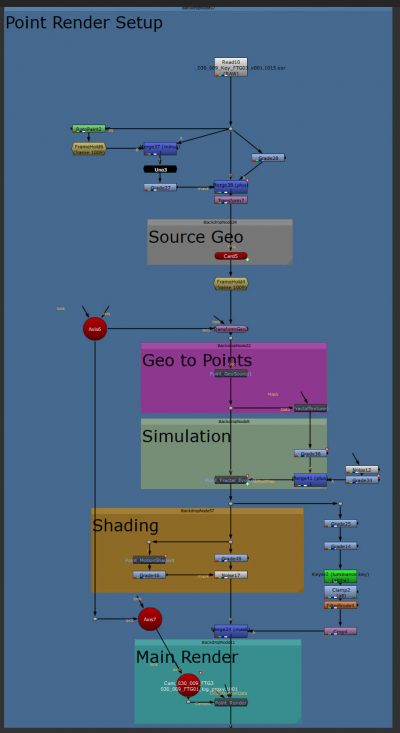
CoSA used the Foundry’s NukeX extensively for compositing and designing effects. Ryan Bauer was the Compositing Supervisor, and she and the various other compositors used Nuke’s, higx plugin extensively. Higx is a Nuke point renderer. It is a Blink (C++/GPU) powered render engine, that lets CoSA’s artists create, modulate and render dense hologram effects. Unlike other renderers for Nuke, the PointRender is using image data rather than geometric data, meaning that artists can easily modify it using all of the built-in 2d nodes. It’s created using only native Nuke nodes, as a group, so it works with every version of Nuke which supports BlinkScript. The Point Render comes with a series of nodes such as Generators, Modifiers, Shaders, and Utilities. These make it easy to come up with complex looks, and quickly iterate to a final look. “We used higx quite a bit for various different holograms,” comments Bauer. “For example, when the woman is in the boardroom and the boardroom explodes and her hologram implodes into a bunch of digital pixels”. It was also used when Maeve is in the forge, and she starts to see the environment disintegrate around her. “The environment starts to glitch and disintegrate, – actually the lookdev for that had started in After Effects, but when we settled on a final look we rolled it into Nuke”.
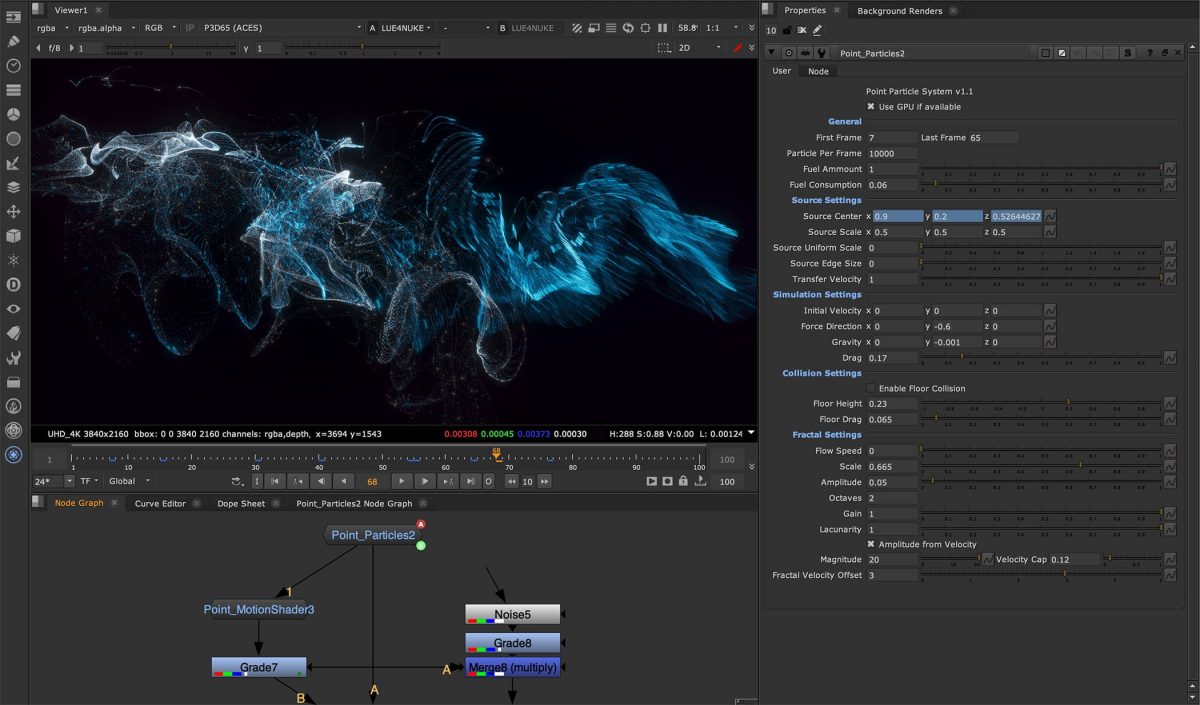
Higx is written by Mads Hagbarth Damsbo, a VFX Technical Director and Pipeline TD from Nordisk Film Shortcut (Copenhagen Denmark). The Nuke Point Render plugin was first released back in March of 2019 and was Damsbo’s first commercial Nuke product. (He has been creating free tools and plugins distributed via Nukepedia for years). As higx is a group, like any other Nuke node the team could copy it into a text document, send it via an email if required. It can then be pasting it into Nuke, and it works with no other installation required. ” I created the tool because I really wanted a fast way to create UI elements, such as Magic, Energy, and other additive effects, and there were really no good tools to do that within Nuke,” Damsbo commented from Denmark. Nuke has a limited set of 3D nodes and manipulators, but it does have the industry standard in strong 2D image manipulation tools. “So it made good sense to make the tool act as a 2D tool, rather than a 3D tool,” he adds. All of the CoSA team’s data (positions, normals, vectors, etc.) were used as 2D images that they could manipulate with Nuke’s native 2D nodes. “And in the end, it will render them out in 3D. This makes it much easier to work within a compositing context and people can easily extend it without having to write complex code,” he adds.
In Nuke an artist only has a handful of nodes that let them modify 3D Geo (e.g. transform, scale, rotate, displace etc). If a client asks for a 3D wavy pattern, it is complex to do. But via this 2D approach, for example, all an artist needs to do is displace the Y axis with a Sine curve. In the clip above, the ‘3D’ point render can be seen to be stored as 2D images. The x,y,z coordinates of the points are stored as RGB values. “Artists can combine the color/shading with data, and say that the color intensity should be magnified by the movement velocity of the points. Again something that the Nuke’s own 3D Geo toolset can’t do,” adds Damsbo.
In addition to CoSA, higx is used by a wide range of major industry players, including WETA, Sony Pictures Imageworks, The Mill, Dneg, Framestore, Animalogic, MPC, Rodeo, Luma Pictures, and Zoic.
Environments
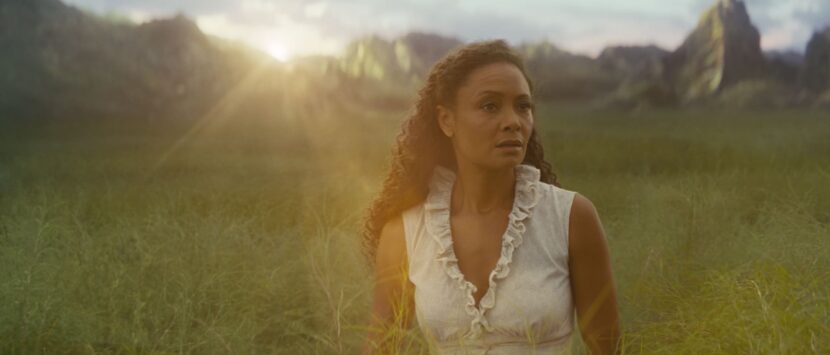
CoSA did environment work both in the real world and when characters go back into the park, at the Delos Complex. “We did a lot of environments, … we completely replaced the background in so many shots,” explains D’Aprile. CoSA also created the virtual world simulations and the brief vision of the Sublime, where Maeve hopes to reunite with her daughter.
One of D’Aprile’s favorite environment sequences this season is when “Caleb walks onto the jet in this hanger. We ended up completely replacing the background, we added the Jet in there,…there were many shots in that sequence and yet on set there were just some stairs”.
Central to this season is Rehoboam, a sophisticated artificial intelligence, which Dolores is trying to gain access to, and which effectively controls the lives of normal people such as Caleb. The Rehoboam interiors were shot in the Bank of America building in downtown Los Angeles. “And every time we were inside the building was seeing through those big windows, we had to put a matte painting outside” adds D’Aprile. “Rehoboam has been a hero asset for CoSA throughout the whole season. CoSA finalized the design, model, and look of Rehoboam in the first episode and featured it (along with its predecessor Solomon) though the whole season.”
In the end, the CoSA team did over 300 shots for this season of Westworld. This was about on par for the team’s contribution in previous seasons, but of course, for those earlier seasons, CoSA was all together and able to speak directly to each other. Tom Mahoney, concludes by commenting how remarkably well the team functioned, how supportive the showrunners and HBO were in adjusting to the new conditions, and how proud the team is of the final shows.


